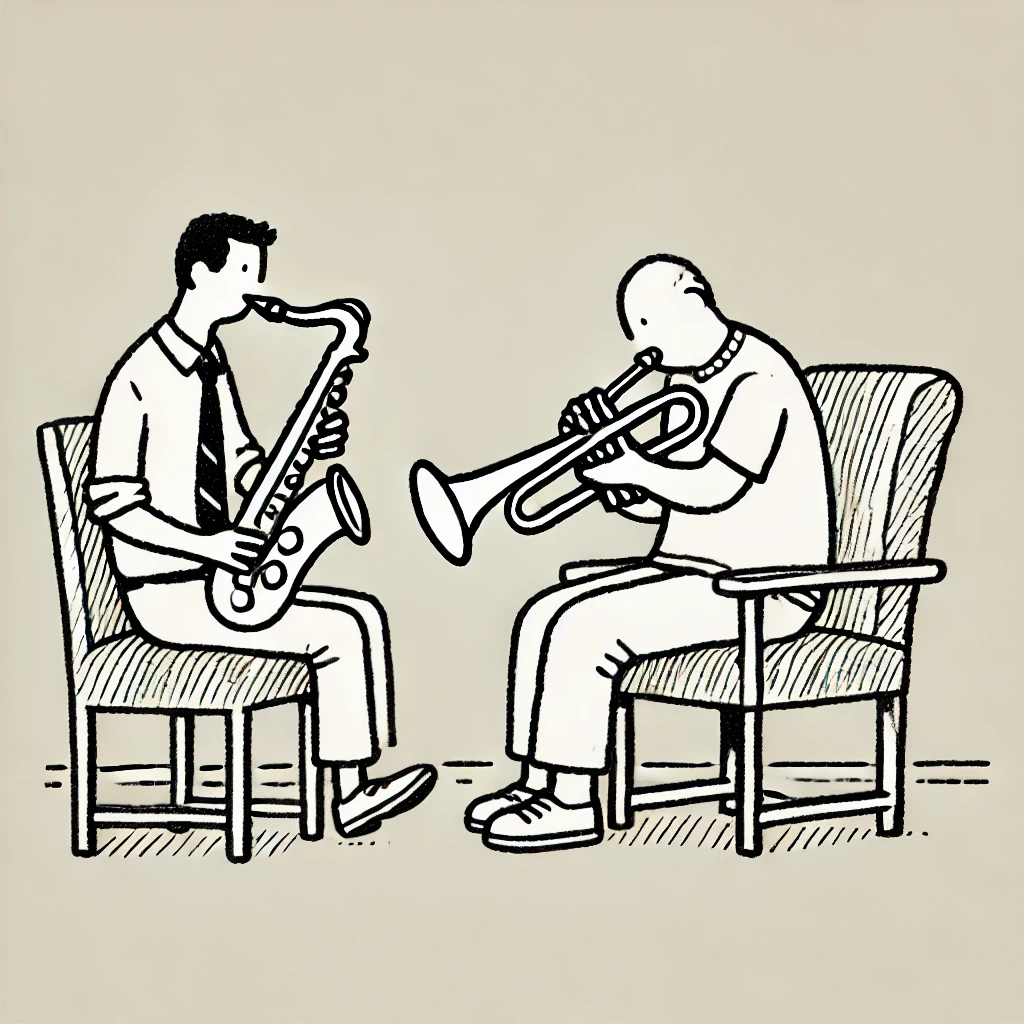
The insights from therapy my clients find most useful generally occur spontaneously. They come from conversations where both of us were struggling with a question that we didn’t know the answer to. Looking back on these moments it’s often unclear who even came up with the insight. They said something, I said something back, and eventually what emerged was better than anything either of us could have thought of individually.
The benefits of these types of collaborative interactions aren’t confined to therapy. Jazz and Blues music is built off the idea that what spontaneously occurs when people interact is better than anything that could be written beforehand. Hollywood uses writers’ rooms because studios know collaboration can lead to better outcomes than individuals working alone. While our current culture values stories of individual genius, many of our best innovations, be they artistic or technological, came through collaboration.
Not all conversations are truly collaborative though. For starters, you need to be actually listening to the other person. If you’re too focused on what you’re doing you’ll just keep building in one direction and never add anything to what the other person is saying. You also need to be comfortable with uncertainty. Pressure to come up with an answer can make you jump on the first possible solution, potentially cutting off the richer idea that could have emerged if you’d allowed the interaction time to develop.
To make things harder, our society tends to value advice over collaboration. When we have a problem, we are told to consult an expert. In exchange for money they provide us with an answer that is better than anything we could come up on our own. If you hired a lawyer and they wanted to start brainstorming different legal strategies with you, you’d probably ask for your money back.
Despite knowing the benefits of collaborative interactions, psychologists feel this pressure as well. Most of us tend to market ourselves based on the knowledge we can provide our clients. It is simpler to tell someone that you can help them by teaching them something rather than trying to explain the benefits of insight-driven therapy. Giving them answers also feels satisfying. My easiest sessions are when clients are asking me for specific information. What I’m providing feels much more definite and tangible than trying to engage them in a collaborative conversation and hoping we can come up with something. However, the information I give in those moments is rarely what clients truly value from therapy.
A lot of the ways we are told to act in our professional lives also stifles collaboration. We are told to go into conversations with clear goals, to always remember our individual contributions lest we are passed over for promotion, to set agendas for meetings. While I understand the logic of this advice, I worry that the costs might be vague enough that they are overlooked. How can you even be aware of potential collaborative insights that were never even arrived at?
More generally, a society that places a premium on expertise and agendas over collaboration is a society filled with people who struggle to collaborate effectively. In initial sessions my clients are often uncomfortable engaging in the sorts of conversations that can lead to insights. They don’t like speaking speculatively, will want to pre-plan agendas, will ask me to answer questions before they’ve even properly explored what the questions are. For these clients it is often a desire for accuracy that is holding them back. They feel that the serious nature of a therapeutic room requires them to only say things that they are sure are entirely accurate. They are like a musician so scared of playing the wrong notes that they repeat the same scales instead of truly improvising. It is only when they feel comfortable expressing things that they are unsure of, of responding in the moment to things I say, that we can start to build insights they find valuable.
I’ve written this piece to try and explain one of the main ways therapy is helpful, but also to encourage people to have more collaborative interactions in their daily lives. Collaboration shouldn’t be reserved to jazz bars, writers’ rooms and therapists’ offices. If you currently have a problem that has you stumped, try talking to other people about it. Solutions will come from those conversations that you would have never thought of on your own. And the next time someone comes to you for advice, resist the urge to respond with the first thing you think of. Allow the problem to develop, kick it around, and hopefully something will emerge that is much better than your original solution.

